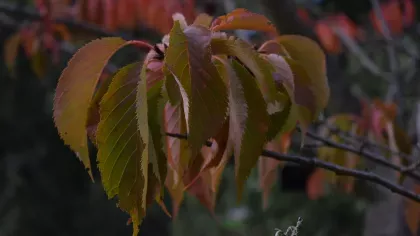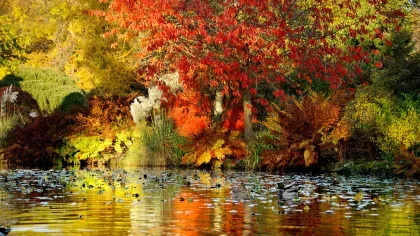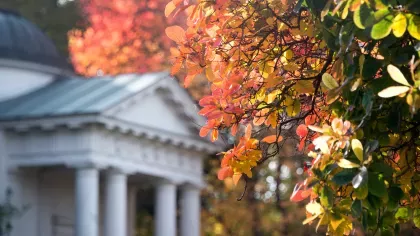6 October 2021
Get set for a riot of colour at Wakehurst
Discover more of what makes Wakehurst magical on our ‘Photo ops and wildlife spots’ walking route.

Get your walking boots on to explore the wilder areas of Wakehurst on our new ‘Photo ops and wildlife spots’ walking trail, taking a trip to some special places for picnics, warm drinks, gorgeous views and truly magnificent photo opportunities.
Autumn is a great time to enjoy Wakehurst, with the season’s changes creating a blaze of radiant colour across the landscape.
We’ve created an autumn trail (1.5 - 2 hours at a leisurely pace), that highlights some of the lesser-visited areas of Wakehurst for all things crimson, gold and orange.
Shapes and smells
The trail starts near the Tony Schilling Asian Heath Garden, a vibrant landscape full of wild-collected plants arranged by country. Keep an eye out for the beautiful fan-shaped leaves of the Ginkgo biloba or maidenhair tree which turn gold in the autumn months.
Then there is the showy-in-all-seasons golden rain tree (Koelreuteria paniculata). Its delicate fluffy yellow flowers turn into architectural orange-brown fruit, with dramatic leaf changes from green through amber, vivid bronze and brown.
Sweet smell in the air? That is the candyfloss tree (Cercidiphyllum japonicum), named for the delicious fragrance that its heart-shaped leaves give off as they change colour when the weather gets cooler.
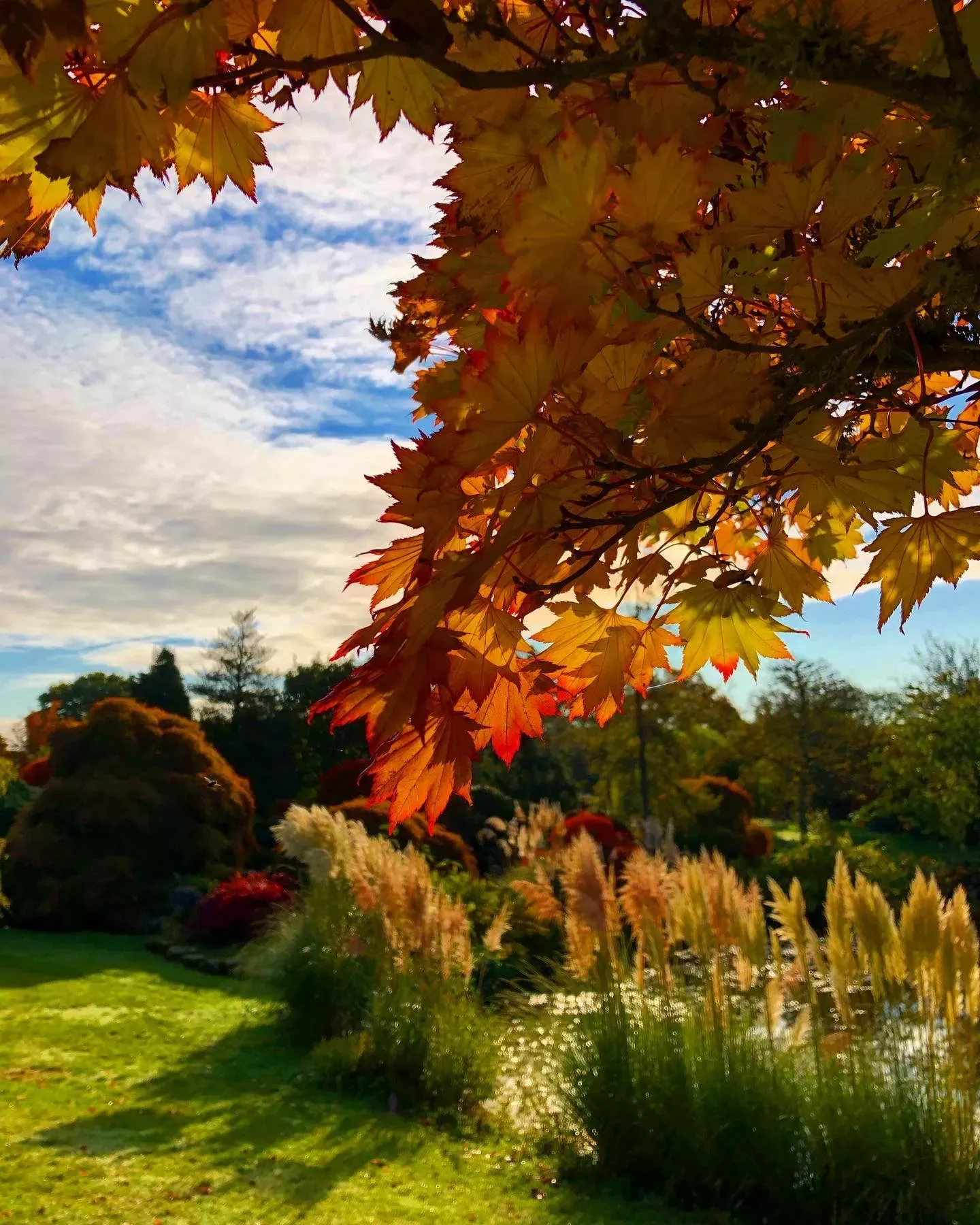
Unbeatable views
Autumn is a sensational season, not only due to the vivid colours of the changing foliage, but the crisp air, crunching leaves underfoot, and the views that leaf fall make possible.
The dips and climbs on this walk make for spectacular views across Wakehurst.
Did you know, hormones aren’t just in humans? Leaf fall is due to hormonal changes triggered by the cooler weather and reduction in sunlight, preparing the tree for winter.
As you continue the trail past the Iris Dell, you can look out over the Westwood Valley for a riot of colour and shapes as magnolias, maples, rhododendrons, and oaks all prepare for winter amid the evergreen pines.
The reduction of chlorophyl provided to the leaves allows other pigments to be revealed, giving the famous blaze that this season is known for.
Listen out for the other-worldly call of fallow deer as you enjoy the stunning scenery of the Loder Valley Nature Reserve. This special area includes an ancient woodland ablaze with autumn’s shades, and a large reservoir, home to many bird species.
A gate code to access the reserve is available from the Visitor Centre.
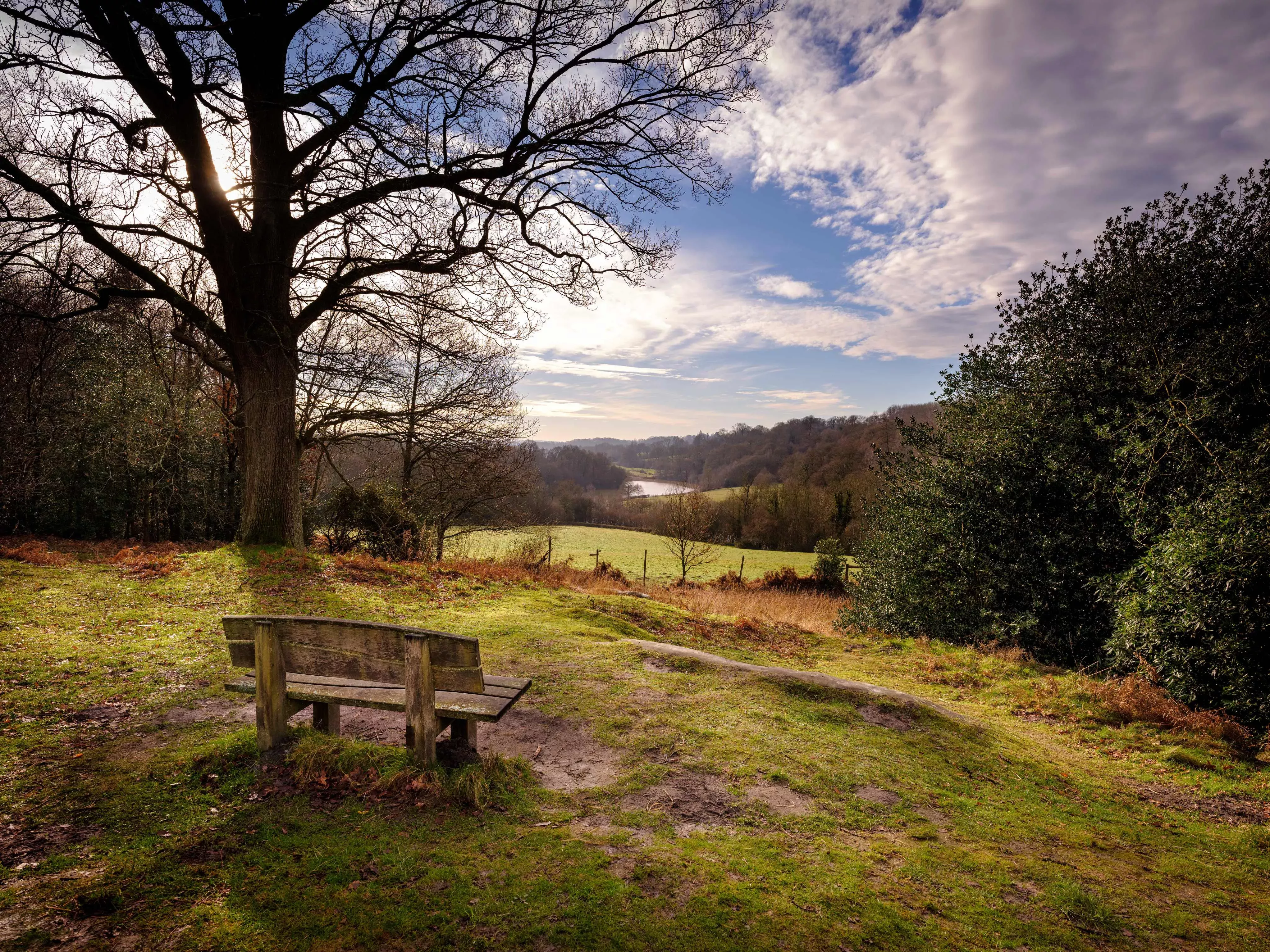
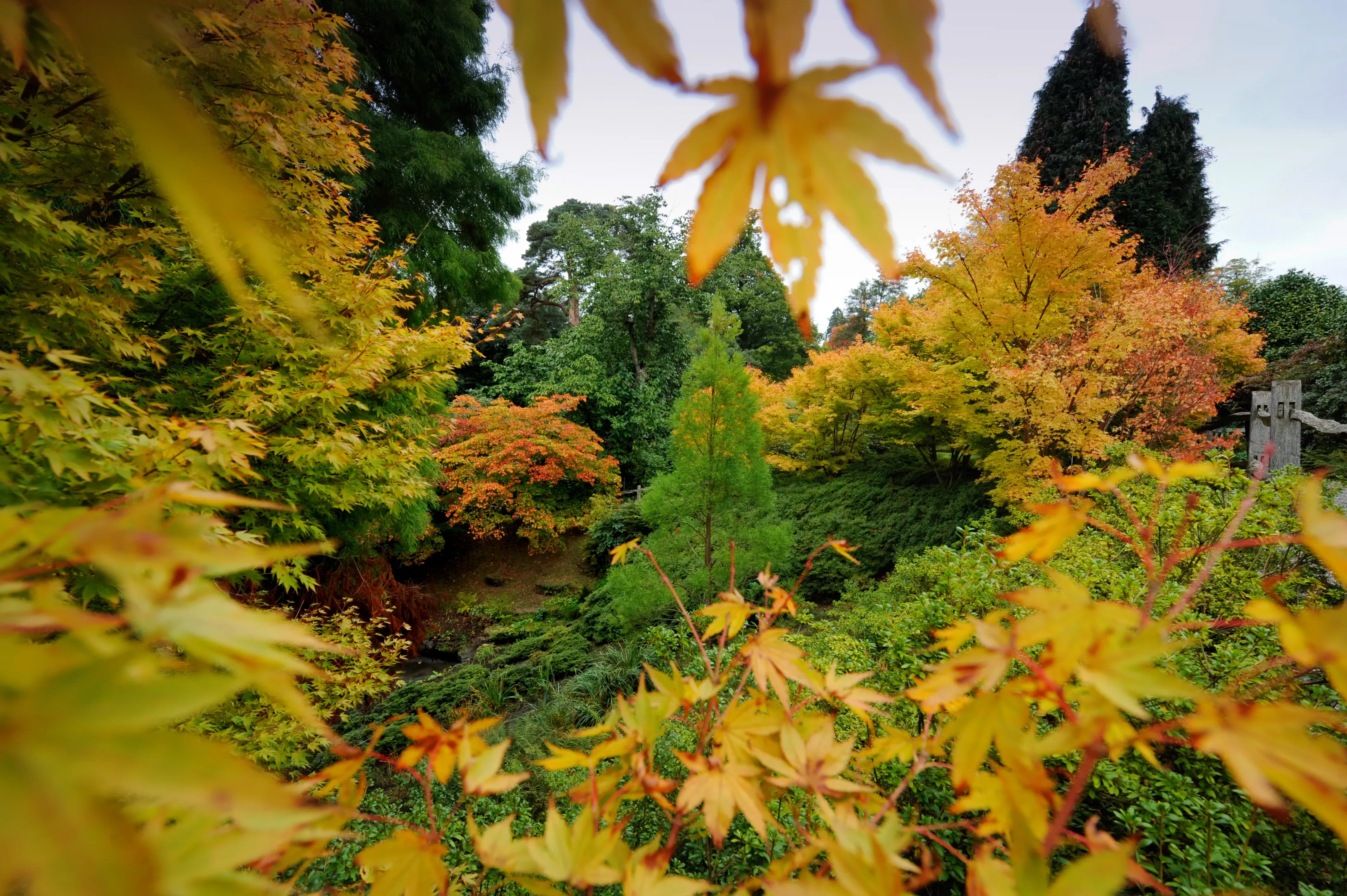
Birds and beasts
Take time to enjoy other signs of seasonal changes at Wakehurst, with birds stocking up on berries and nuts, butterflies gathering nectar from late-flowering ivy, and dragonflies feasting on the last flies over Westwood Lake and the Wetlands.
There is a fantastic viewing point at Westwood Lake with some benches – a great spot for a picnic while enjoying the reflections of the trees in the water.

Have your binoculars ready as you make your way up from Westwood Lake – there are great birdwatching spots with views over the Himalayan Glade. This area is planted with shrubs and trees from China and the Himalayas, including various barberry species, some with bright scarlet foliage.
You may notice more spiders in autumn, especially when their webs are decked in morning dew. This is not an arachnid invasion – it’s mating season for our eight-legged friends!
Can you spot mushrooms popping up amid the carpet of leaves and scattered on trees? Watch our Fungi season at Wakehurst video below to find out more about these incredible organisms and where to spot them.
Fungi are exceptionally important to life on earth, keeping the natural world in balance through symbiotic relationships with plants and animals, and helping to break down dead and decaying matter.
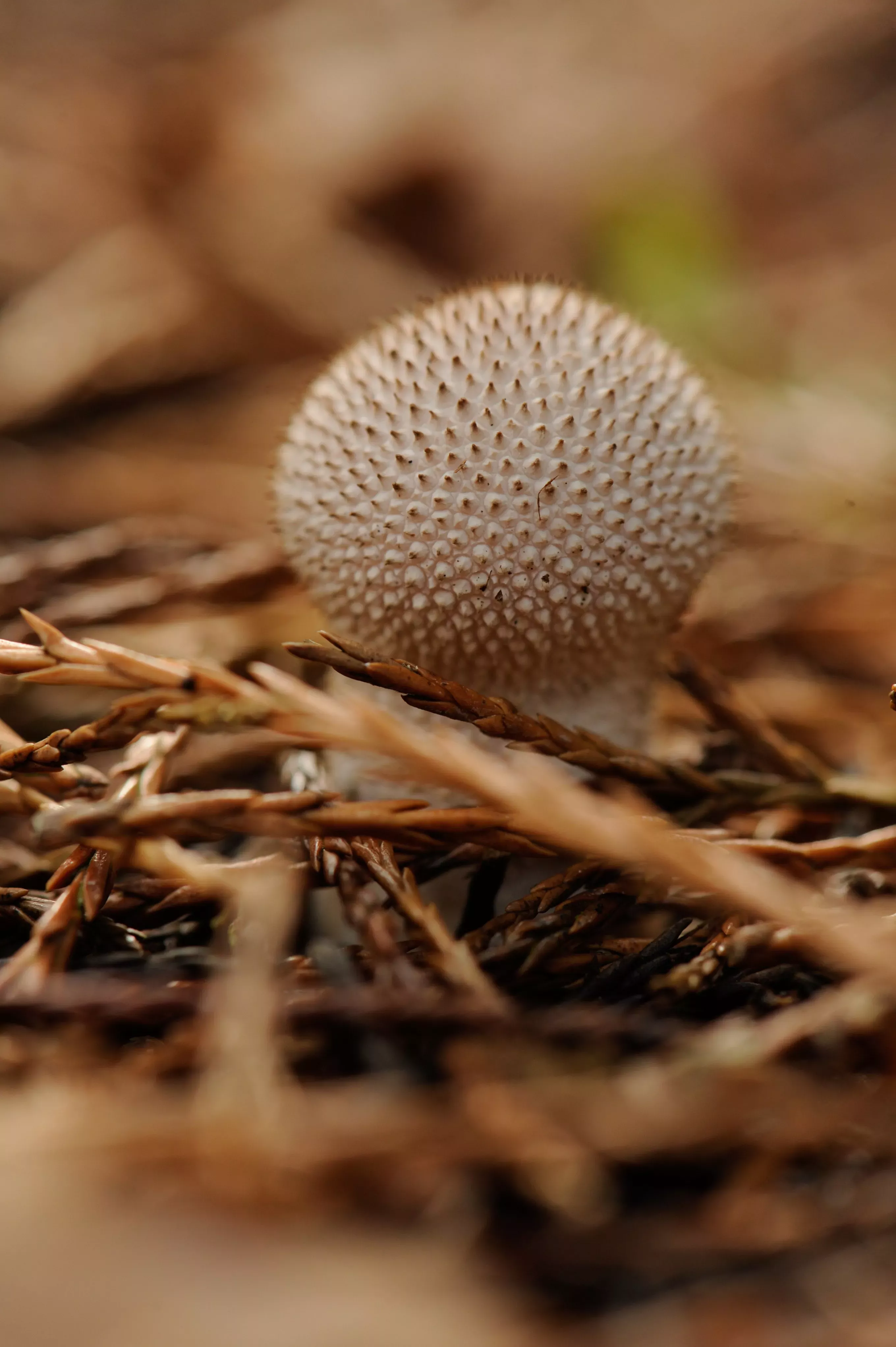
The end of the route goes through the Bog Garden and Water Garden to discover garden plants that love moisture. These are atmospheric gardens, full of light, sounds of water, and textured grasses, trees and plants. A calm end to a long walk.
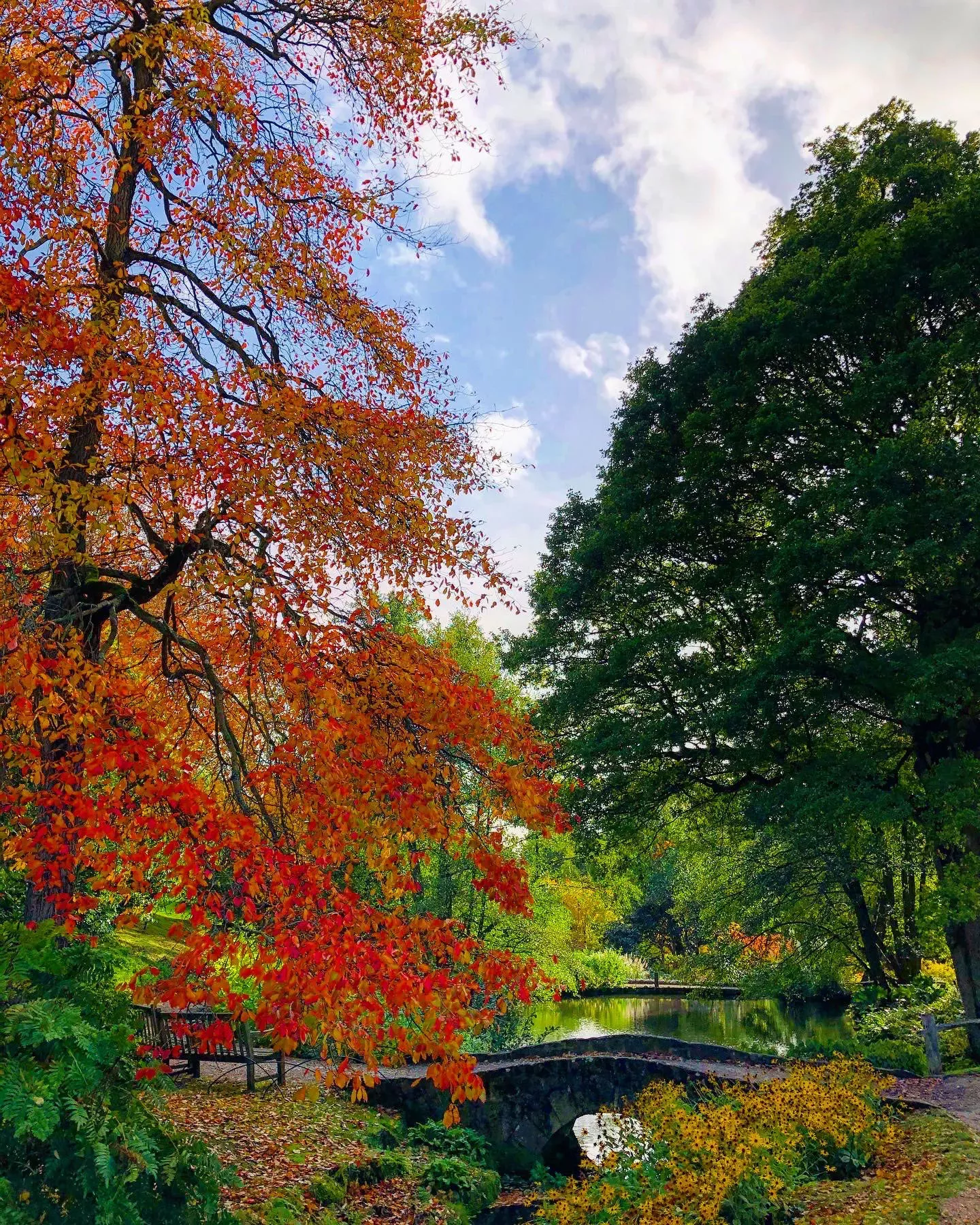
With so much space to roam you can really let the kids run wild at Wakehurst. Entry is free for children 16 and under, making it an affordable and fun family day out. If you're looking for a shorter walk for little legs, try our Gruffalo's Child trail, available from 16 to 31 October (booking essential).
Wakehurst is open seven days a week except Christmas Eve and Christmas Day, and we encourage booking a time slot to help reduce queues.
Be sure to pick up an arrival guide, which includes a map of the walking routes, as well as where to get coffee and cake to enjoy along the way.
If you want to learn how to take great photos, sign up for our autumn-inspired Digital photography workshop, taking place on 17 October.
